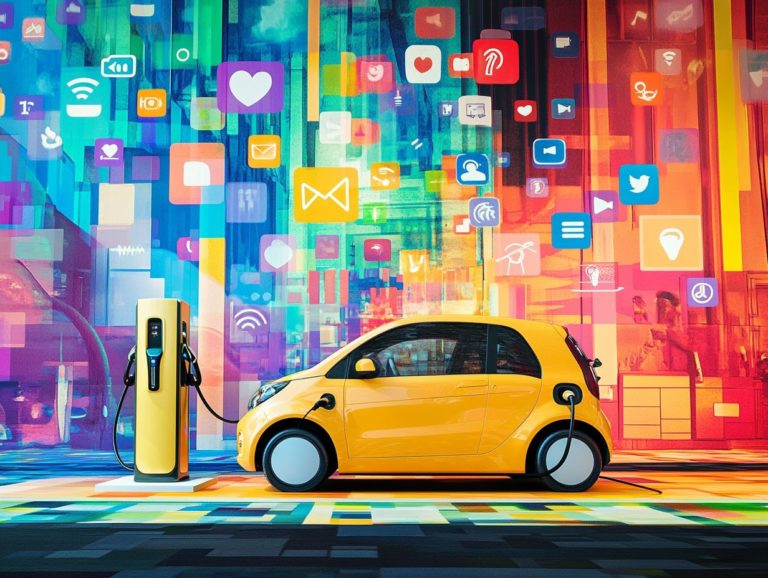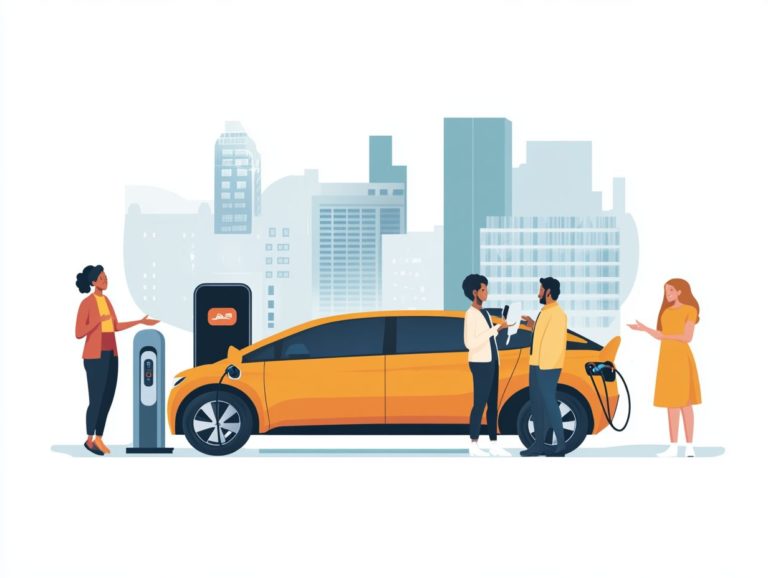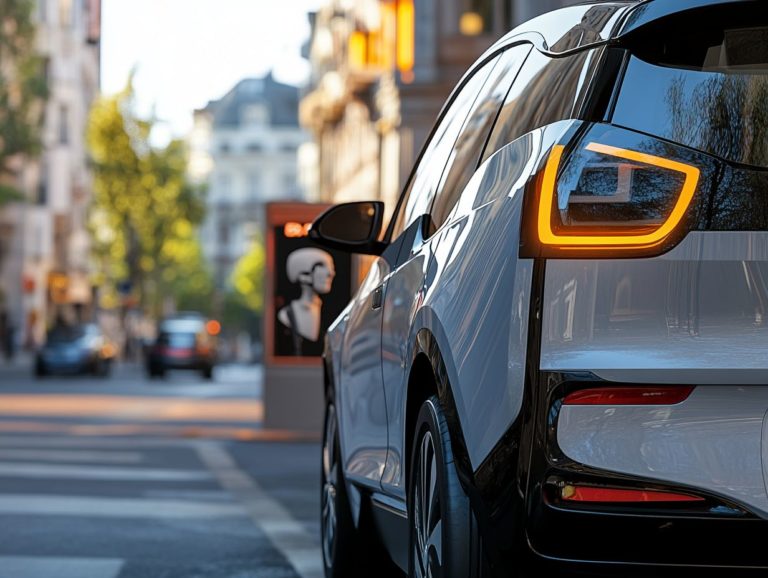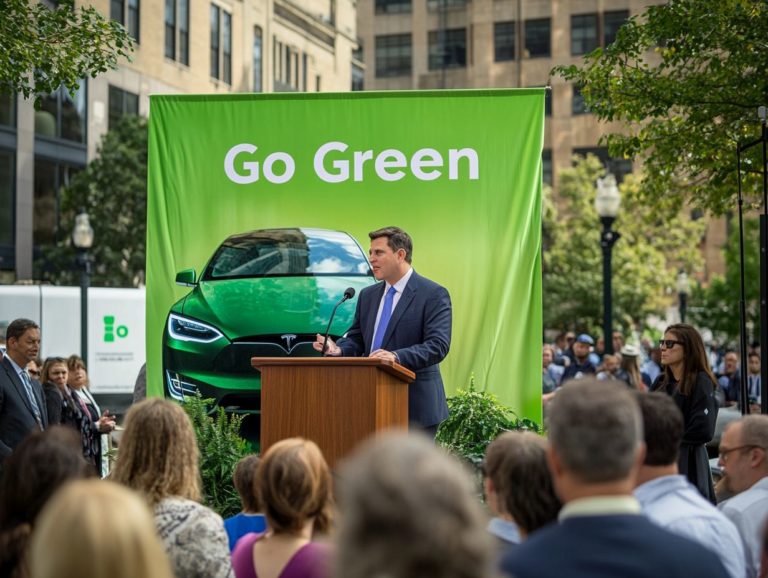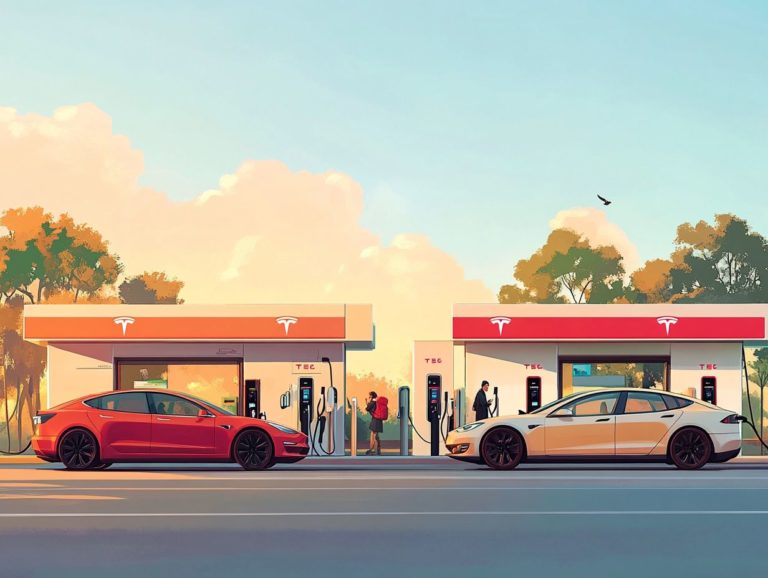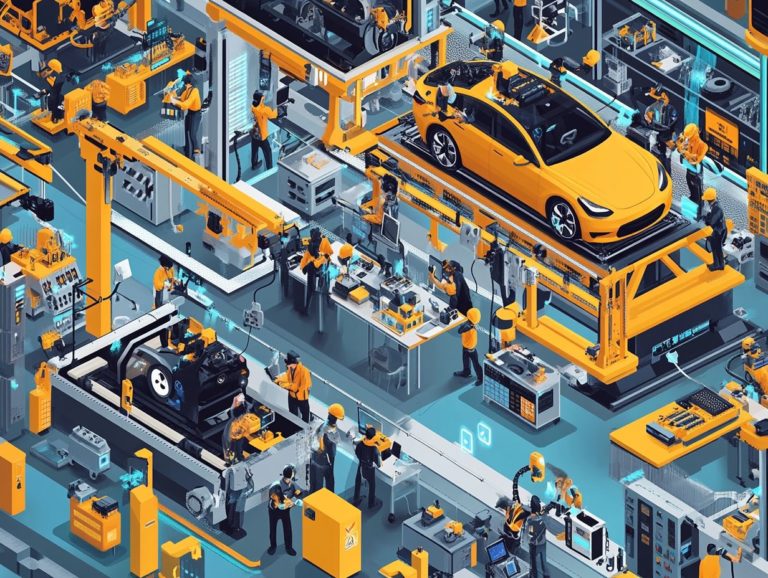Challenges Facing the EV Industry in 2024
The electric vehicle (EV) industry stands at a crucial crossroads, balancing swift expansion with formidable challenges. It’s vital to acknowledge the environmental and economic obstacles that could influence its future path.
Consider the infrastructure constraints, technological hurdles, regulatory landscapes, and competition from traditional automakers. These elements will significantly shape the EV landscape in the years ahead.
In this discussion, we will delve into these challenges while also exploring advancements in battery technology that promise a more sustainable future.
Contents
- Key Takeaways:
- Overview of the EV Industry
- Facing the Challenges: Environment and Economy
- Infrastructure and Technology Limitations
- Regulatory and Policy Issues
- Competition from Traditional Automakers
- Battery Technology Advancements
- Frequently Asked Questions
- What are the main challenges facing the EV industry in 2024?
- How will the high cost of EVs impact the growth of the industry in 2024?
- What is being done to address the limited charging infrastructure for EVs in 2024?
- How does the lack of consumer awareness and acceptance pose a challenge for the EV industry in 2024?
- What role will government policies and regulations play in shaping the future of the EV industry in 2024?
- How will advancements in battery technology affect the challenges facing the EV industry in 2024?
Key Takeaways:
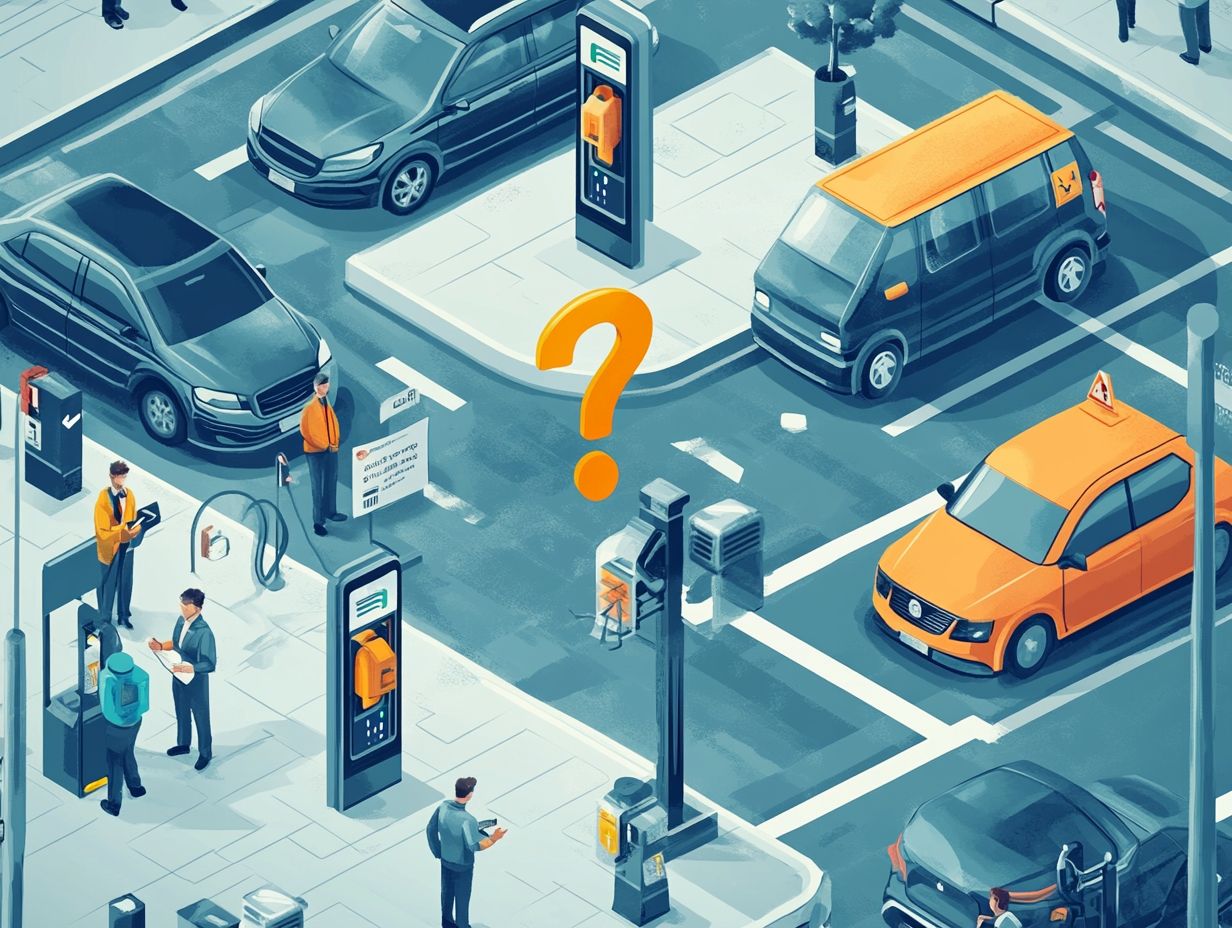
- The EV industry is set to grow, but it faces serious environmental and economic challenges.
- Infrastructure and technology limitations may hinder widespread adoption.
- Advancements in battery technology offer potential solutions, but progress is needed to address challenges facing the EV industry by 2024.
Overview of the EV Industry
The electric vehicle (EV) industry has witnessed extraordinary growth over the past decade. This growth is fueled by surging consumer interest, substantial investments in battery technology, and a worldwide commitment to lowering carbon emissions.
As traditional automotive manufacturers transition to electric vehicles, companies like Tesla and BYD are reshaping market dynamics. They are seizing significant market share and intensifying competition within the EV landscape.
With the cost of lithium, a key component in batteries, on the rise and advancements in battery technology, navigating infrastructure challenges and supply chain disruptions is crucial for the exciting future of the industry.
Current State and Growth Projections
The electric vehicle market is currently thriving, marked by impressive growth projections. Electric vehicle companies are adopting innovative strategies to secure a substantial foothold in the automotive sector.
This momentum is fueled by rising consumer interest, driven by breakthroughs in battery technologies and supportive government policies designed to curb carbon emissions. Intense competition among major manufacturers is accelerating research and development, leading to significant improvements in range and performance.
Investment trends are shifting as well. Considerable capital flows into startups dedicated to electric mobility solutions, while established players refine their production processes to reduce costs. As electric car pricing becomes increasingly competitive, consumer demand is expected to surge, paving the way for successful strategies that highlight sustainability and cutting-edge technology.
Facing the Challenges: Environment and Economy
The shift to electric vehicles presents its share of challenges. The industry navigates environmental impacts and economic hurdles, making it crucial to consider evaluating the sustainability of the EV industry to ensure progress in cutting carbon emissions.
Impact on Climate Change and the Economy
The impact of electric vehicles on climate change is predominantly positive. They offer a promising pathway to significantly reduce carbon emissions. However, navigating the economic implications presents both opportunities and challenges for stakeholders involved.
As innovative startups push the boundaries of technology, they are not just reshaping the automobile market; they are also influencing consumer choices. This shift is reflected in the growing demand for sustainable options, compelling traditional manufacturers to adapt or risk falling behind.
While the rise of electric vehicles has the potential to lower greenhouse gas emissions and reduce reliance on fossil fuels, it also prompts important questions about job displacement in conventional auto industries. The increasing need for skilled labor in new energy sectors indicates a transformation that could lead to both economic growth and environmental benefits.
By observing these emerging trends, you gain valuable insight into how consumer preferences are evolving. This highlights the delicate balance between sustainable practices and economic stability.
Stay informed about electric vehicles and their impact on the future. Your awareness can help drive positive change in our society.
Infrastructure and Technology Limitations
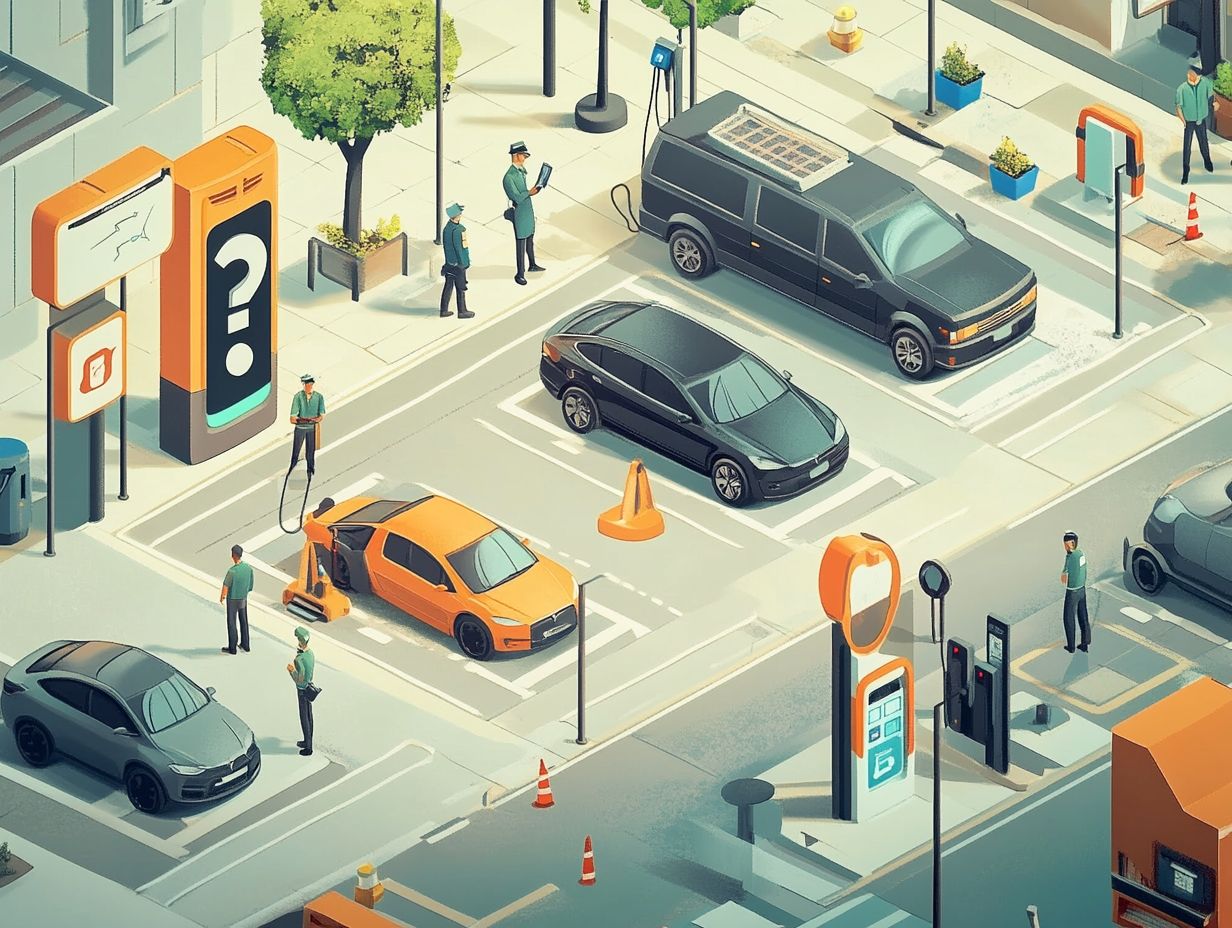
Despite the exciting growth trajectory of electric vehicles, there are several infrastructure and technology limitations that present significant challenges to widespread adoption.
This is especially true in the areas of EV charging and advancements in battery technology.
Obstacles to Widespread Adoption
The widespread adoption of electric vehicles faces multiple hurdles, particularly infrastructure challenges that affect both consumer demand and the strategies of car manufacturers.
Limited availability of charging stations and high upfront costs can deter you from making the switch to electric. Many potential buyers are understandably hesitant, especially in areas where charging options are sparse. This can create uncertainty and concern about range and accessibility, making it difficult to commit to owning an EV.
To tackle these challenges, car manufacturers must join forces. By boosting funding for charging infrastructure and forging partnerships with local governments, they can help clear these obstacles from your path.
The industry must act now to build a supportive ecosystem that not only enhances your confidence but also incentivizes the transition to a greener future.
Regulatory and Policy Issues
Regulatory and policy issues are pivotal in shaping the electric vehicle industry’s growth. Government incentives and regulations create market opportunities and significantly enhance consumer engagement.
By understanding and navigating these dynamics, you can position yourself advantageously in a rapidly evolving landscape.
Government Incentives and Regulations
Government incentives and EV regulations play a crucial role as you navigate the complexities of financial markets and consumer preferences in the electric vehicle sector.
These incentives like tax credits for consumers and grants for manufacturers encourage the adoption of electric vehicles while minimizing the initial costs tied to their production. This financial support redefines the competitive landscape by lowering barriers for new entrants and compelling established brands to innovate faster.
While regulations are vital for addressing environmental concerns and fostering sustainable practices, they can also introduce constraints that may hinder creativity. The challenge for you lies in finding the right balance between following the rules and continuous innovation. This balance is essential for cultivating a more sustainable and competitive electric vehicle market.
Competition from Traditional Automakers
The emergence of electric vehicles has ignited fierce competition among traditional automakers. They are diligently refining their strategies to stay relevant in a rapidly changing market while preserving their market share.
Challenges for Established Brands
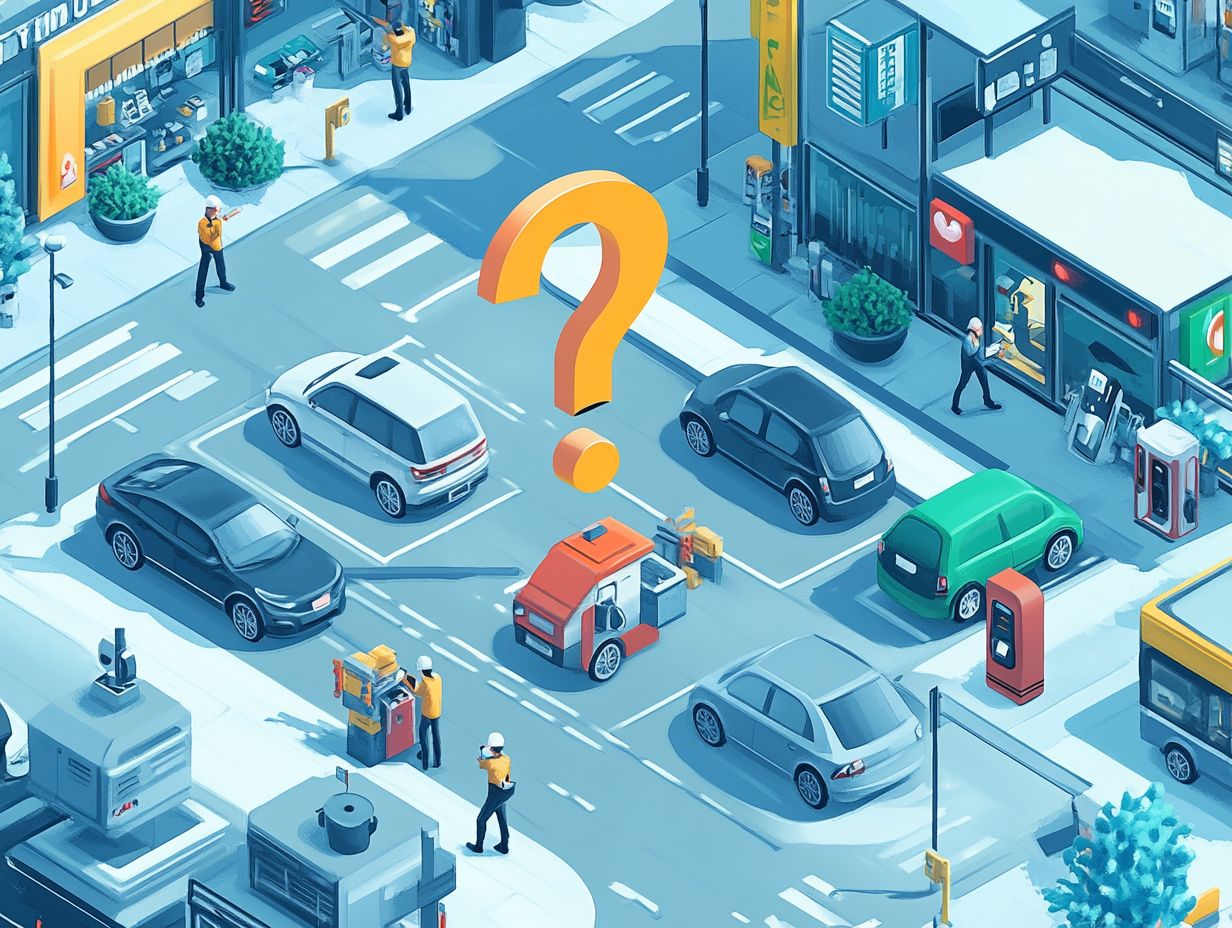
Established brands in the automotive sector are facing unique challenges as they enter the electric vehicle market, competing with emerging players and adapting to shifting consumer preferences.
Many of these brands are grappling with reallocating resources to prioritize electric vehicle development while managing their existing internal combustion engine lineups. As consumer expectations move toward more sustainable practices, traditional manufacturers must upgrade their technology and showcase a genuine commitment to environmental stewardship.
To stay competitive, established companies can leverage their long-standing reputation and customer loyalty by integrating innovative solutions, such as advanced battery technologies and enhanced charging infrastructures. Maintaining transparency about their transition strategies is essential to foster trust among their consumer base.
Battery Technology Advancements
Battery technology advancements are driving the electric vehicle revolution.
This progress provides longer driving ranges, reduced production costs, and a more sustainable approach to critical minerals and supply chains.
Embracing these innovations not only enhances your driving experience but also contributes to a more environmentally responsible future.
Potential Solutions and Progression
Consider potential solutions to the challenges facing the electric vehicle industry, such as ongoing advancements in battery technology, strategic partnerships among vehicle manufacturers, and a surge in venture capital investments. For a deeper insight, explore the EV market predictions for the next 5 years.
These innovative strategies enhance energy storage capacity and reduce charging times.
By fostering collaboration among major players, you can facilitate the sharing of technologies and platforms, ultimately leading to a more resilient supply chain that benefits everyone involved.
As investment trends increasingly favor sustainable energy solutions, an influx of capital can supercharge research and development, paving the way for exciting innovations!
In the long run, these solutions hold the promise of significantly boosting market growth, making electric vehicles more accessible and enticing to a wider audience.
Frequently Asked Questions
What are the main challenges facing the EV industry in 2024?
The main challenges facing the EV industry in 2024 include the high cost of EVs, limited charging infrastructure, and a lack of consumer awareness and acceptance, as discussed in detail in Electric Vehicles: A Look at 2024’s Milestones.
How will the high cost of EVs impact the growth of the industry in 2024?
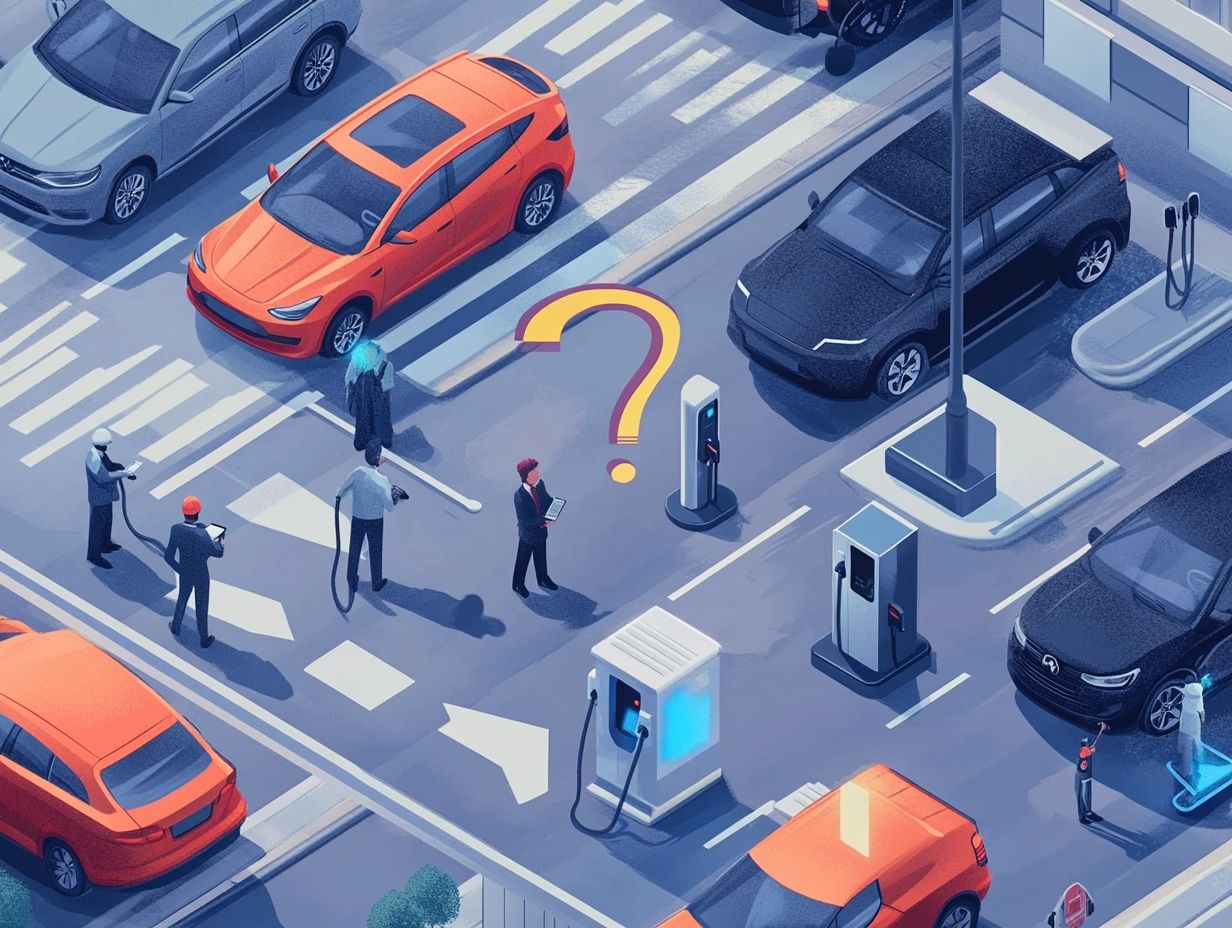
The high cost of EVs is expected to be a major barrier to widespread adoption in 2024. This is due to the expensive battery technology used in EVs and the lack of government incentives or subsidies, but innovations like the top 10 electric vehicle innovations of 2024 may help address these challenges.
What is being done to address the limited charging infrastructure for EVs in 2024?
Efforts are being made to expand the charging infrastructure for EVs, including the installation of fast-charging stations along major highways and in urban areas.
However, the pace of development may not be enough to keep up with the growing number of EVs on the road, which could create further challenges.
How does the lack of consumer awareness and acceptance pose a challenge for the EV industry in 2024?
Many people don t yet realize the incredible benefits and capabilities of EVs.
There is also a lack of acceptance due to concerns about range anxiety and charging times, which could hinder the growth of the industry in 2024, especially when considering global EV sales trends that may unfold by 2025.
What role will government policies and regulations play in shaping the future of the EV industry in 2024?
Government policies and regulations, such as emissions standards and incentives for EV purchases, will have a significant impact on the growth and development of the EV industry in 2024, including the top features of 2024’s EV models.
Changes in these policies could either hinder or accelerate the adoption of EVs.
How will advancements in battery technology affect the challenges facing the EV industry in 2024?
Advancements in battery technology, such as increased energy storage capacity and reduced costs, could help address some challenges facing the EV industry in 2024, including high prices and limited range, as highlighted in the rise of electric vehicle startups in 2024.
However, it remains to be seen how quickly these advancements will be made and implemented in the market.

